MPHIL/PHD ARCHITECTURAL DESIGN AND MPHIL/PHD ARCHITECTURAL AND URBAN HISTORY & THEORY


MPHIL/PHD ARCHITECTURAL DESIGN AND MPHIL/PHD ARCHITECTURAL AND URBAN HISTORY & THEORY

Omar Abolnaga
Demystifying ‘Ashwa’iyyat: An Alternative Approach to Understanding Urban Informality in Cairo
Daniyal Farhani
Acupuncture for a Disciplined Urban Realm: The Case of Sanyuanli Urban Village, Guangzhou
Christiane Felber
Modern Arts and Crafts: Council Housing in Lambeth, 1965–1980
Tumpa Husna Yasmin Fellows
Improvised Architectural Responses to the Changing Climate: Making, Sharing and Communicating Design Processes in Rural Bangladesh
Natalie Garland
Protracted Displacement, Injustice and a Failed Humanitarian Regime: The Syrian Pursuit of Dignity
Nikoletta Karastathi
Sympoietic Eco-Plexis: A Post-Digital Approach Towards Ecologically-Crafted Textile Architectures
Said Mahathir
Religious Infrastructure of Muslims in London: A Study of the Production of Religious Lived Spaces
Ana Mayoral Moratilla
Contested Meanings: The Case of Madrid’s Ciudad Universitaria
Catalina Pollak Williamson
Critical Play: Participatory Tactics for a Radical Urban Praxis
Petra Seitz
Good, Bad and Ugly: Herman Miller’s Action Office, Theory Y and the Mid-Century Office
Conference Participants’ Biographies
Credits
Past PhD Research Projects Conference and Exhibition
PhD Research Projects 2023 is the seventeenth annual conference and exhibition related to doctoral research at The Bartlett School of Architecture, UCL. The event is open to the public and involves presentations by students undertaking the MPhil/PhD Architectural Design and MPhil/PhD Architectural and Urban History & Theory. This year, we also have contributions by MPhil/PhD students from the Architectural Practice programme, as well as from The Bartlett Development Planning Unit and the UCL Institute for Global Prosperity.
Leading to a PhD in Architecture, The Bartlett School of Architecture’s doctoral programmes encourage originality and creativity. Over 90 students are currently enrolled, and the range of research subjects undertaken is broad. Each annual PhD conference and exhibition focuses on a smaller selection of presentations from students who are developing or concluding their research. The purpose of the conference and exhibition is to encourage productive discussions between presenters, exhibitors, staff, students, critics and the audience.
Organised and curated by Dr Stylianos Giamarelos and Dr Stamatis Zografos, PhD Research Projects 2023 has six invited critics: Professor Nnamdi Elleh, School of Architecture and Planning at the University of the Witwatersrand, Johannesburg; Professor Camillo Boano, The Bartlett Development Planning Unit; Professor Jonathan Hill, The Bartlett School of Architecture; Dr Eva Branscome, The Bartlett School of Architecture; Dr Marina Lathouri, the Architectural Association; and Dr Ruth Bernatek, University of Oxford. Presenting this year are: Omar Abolnaga, Daniyal Farhani, Christiane Felber, Tumpa Husna Yasmin Fellows, Natalie Garland, Nikoletta Karastathi, Said Mahathir, Ana Mayoral Moratilla, Catalina Pollack Williamson and Petra Seitz.
‘I, [Student’s full name], confirm that the work presented in this thesis is my own. Where information has been derived from other sources, I confirm that this has been indicated in the thesis.’
Signed declaration to be included in each copy of a thesis, UCL Academic Manual 2022-23, Chapter 5: Research Degrees Framework, Part A, 5.1.1
There is no preset, all-encompassing method of doing a PhD, no standard instructions on how to start it, no guided process that ensures its completion. Doctoral work is messy. It moves at an uneven pace, evolving quickly at times, staying painfully stuck at others. Sometimes, it even regresses. Doctoral work is slippery. It does not always go according to plan. Frequently, it eludes a strictly set course, randomly leading to new, unpredictable directions.
And yet, what a finished PhD should look like is commonly agreed upon and strictly defined by institutions. A completed PhD should be presented as a carefully planned document, an integrated whole that conveys a clear, coherent argument, barely hinting at
the disordered and confusing process that led to its creation.
Among the thirteen requirements of a PhD thesis listed in UCL’s Academic Manual, the first states that a thesis should demonstrate it ‘is genuinely the work of the candidate’. The eleventh requirement asks for a further specification of ‘the sources from which information has been derived, the extent to which the work of others has been used, and the areas which are claimed as original’.
Original contribution by a single individual is perhaps the most self-evident, undeniable quality of a doctoral thesis. However, when considered from the vantage point of the research process, clearly signposting the originality of one’s work is more challenging than it initially appears.
None of the defining moments of my ongoing doctoral work involved just myself. These moments instead boil down to an assortment of unexpected, random encounters with people or objects. The idea for the topic itself emerged while I was working on something completely different, thanks to an unexpected discovery of two books. I bought one of them on a whim at a discount market – it only cost two Euros;
I opened the other at a university library a few days later, in my desperate attempt to avoid doing some ‘proper’ work. Similarly, one of the key ideas for developing my main argument resulted from forcing myself to prepare a presentation for a compulsory seminar which I was not keen to join, thinking it was irrelevant for my work. Another key idea was not even mine. It was brought up by a friend, then a PhD student in another discipline, over burritos and beer on a bench by a London university at which neither of us was studying.
How could one attribute the ‘originality’ and ‘authorship’ of such complexly, collectively formed ideas? How and to whom can they be credited, in what percentages? How much originality is left for the author? Or is the doctoral student an individual who just happens to be present in all these interactions, a thread that connects and only partially controls, a collector whose job is to then put it all together into an ‘original, coherent whole’? Instead of a carefully preplanned argument, a PhD can then be seen as a post-rationalisation of random, often informal encounters with ideas and people, eventually written by one person who speaks for multiple authors.
The PhD theses featured in this year’s Research Projects conference are works in progress, whose authors might also be perplexed by the above questions. In these projects, multiplicity and informality are not related to authorial identity crisis, but manifest themselves on a different level – thematically or methodologically. Some of the presenters embrace methods of bottom-up collaboration, oral history and ethnography to include a multiplicity of ignored voices in architectural historiography and expand the understanding of concepts such as informal urbanism, dignity and memory. Others bring together different perspectives, with new collective knowledge and practices arising from their union: digital fabrication and weaving, labour theory and
commercial office interiors, welfare policies and artistic movements, climate change and decolonising design methods. Lastly, others bring forward the transforming power of the informal, unpredictable encounter, by embracing breaks in otherwise rigidly planned and formalised cityscapes, in the form of urban villages, religious spaces or even participatory play.
It is with these ideas in mind that I invite you to engage with the present catalogue. Most significant are not the pages that follow, but the gaps left between them and what these empty spaces represent. In these gaps lies the potential of interactions and clashes of ideas that might not seem plausible or relevant from the outset, but could eventually change the course of a PhD. These gaps will hopefully be formed in readers’ minds, in critics’ comments, in informal conversations with friends. PhD Research Projects is a planned event, but one that is meant to maximise the potential for unplanned encounters and for anyone to become, even in the unacknowledged margins, a joint PhD author.
P.S. Despite figuring as the author of this Introduction, I, Katerina Zacharopoulou, cannot confirm that the ideas presented in this text are my own.
Sixty to seventy percent of the Cairene population is said to live in informal areas, known by the name ‘ashwa’iyyat, putting Cairo at the heart of urban literature on informality. However, urban research has focused only on informal spaces linked with poverty, lack of modern infrastructure, and state intervention, overlooking a local narrative by different city stakeholders in which other urban forms are also considered to be ‘ashwa’iyyat. Accordingly, this research investigates this alternative perspective by exploring other possible typologies and classifications of ‘ashwa’iyyat, which could be used to deepen understanding of urban informality in Cairo and beyond.
Studies of informal practices have generally privileged state-led definitions of what is and what is not considered informal, something immediately problematised in Cairo as thousands of people are threatened to be displaced, and hundreds of valuable and historic buildings are put at risk of demolition. The research, therefore, challenges these state-led definitions by revealing the distinctive characteristics of ‘ashwa’iyyat that lie beyond what the Egyptian state ‘sees’ as informal.
The research builds its argument based on the author’s first-hand experience
and knowledge of the city, combined with primary and secondary sources, which indicate alternative realities of urban informality on the ground. The study employs mixed archival and fieldwork methods to unpack the broad understanding of Cairene urban informality. These methods generate a range of textual and visual data that question the logic of how urban informality is taught and implemented in the planning and management of Cairo. Archives of the state-sponsored press, TV and film industry are examined, and questions regarding architectural and urban pedagogy in Egypt and the public’s understanding of urban informality are discussed. The spatial, aesthetic and urban manifestations of ‘ashwa’iyyat in Cairo are researched and analysed, deciphering an underexplored facet of the city’s urbanity.
From top to bottom: Busy harah in al-darb al-ahmar, Cairo; Cairene workshop, Cairo; Cairene Street Breakfast, Cairo (Photographs: Omar Abolnaga, 2019)


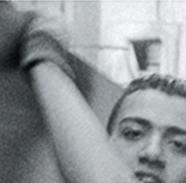































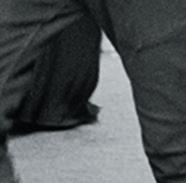



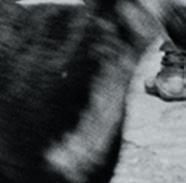

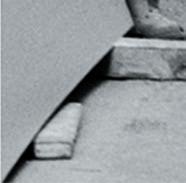














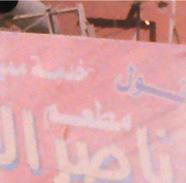


















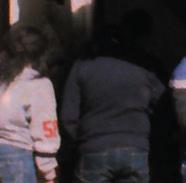







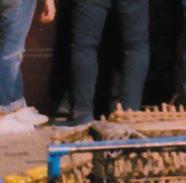


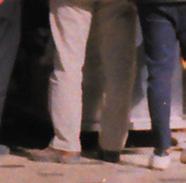

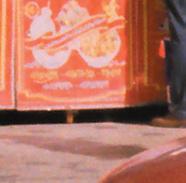
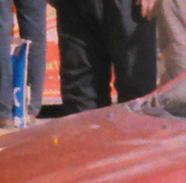








The Bartlett School of Architecture
The Chinese economic reform of 1978 triggered a movement for development and urbanisation that consumed towns and farms via top-down masterplans and led to the creation of complex enclaves labelled urban villages. As these villages grew complex through informal processes and appropriation, they revealed a mode of urbanism otherwise obscured in organised and planned urban places.
Complex heterotopic spaces and informal qualities render Sanyuanli Urban Village a contingent relief node of activity and vibrancy in a disciplined cityscape. The village provides inexpensive and flexible spaces for migrant workers to integrate into the city. In return, spaces evolve and mature through a reprogramming system of spatial uses and ongoing appropriation processes. These places have creative, vibrant, inclusive communities with atmospherically rich urban spaces. Nevertheless, city authorities are often determined to demolish them for less complex development models.
Insights into Sanyuanli’s processes may contribute to new design and development models that respond to changing conditions and alter the rigid approach to masterplanning in the Asian context.
Urban studies by way of design, particularly those that analyse and model complex informal urban villages, are limited in the Asian context.
This research project is informed by empirical findings, spatial analysis, mapping and modelling of varying conditions in the past ten years. It analyses the operation of the village through various theoretical models, among which A Theory of Good City Form by Kevin Lynch and Of Other Spaces by Michel Foucault provide key theoretical concepts. By combining and applying the existing knowledge to a new context and in a new set of circumstances and by highlighting Sanyuanli’s obscured urban qualities, the dissertation aims to justify a view that such villages should not be replaced with formalised urbanscape.
(Author:

With the reorganisation of local government in 1965, many housing responsibilities of the London County Council (LCC) were transferred to newly constituted boroughs, whilst the LCC’s successor, the Greater London Council (GLC), retained a largely strategic role. Some LCC architects moved to the GLC, while others found roles at individual boroughs’ architectural departments. There was a general ‘can-do’ attitude.
In the early 1960s, the welfare-state government had encouraged high-rise housing, partly as a signifier of power, but also as appropriate for smaller sites due to huge levels of demand. In Lambeth, after 1965, there was a search for larger areas for new low-rise development, which was difficult and often involved Compulsory Purchase Orders. Some houses were empty, some squatted, but many were occupied by council tenants and owners who claimed their right to stay. Over time, this resulted in incremental developments adapted to existing communities. Meanwhile, the conservation movement took shape. The first conservation areas, designated in 1967, were evidence of changing attitudes to historic fabric and local identity. Lambeth provides various examples.
This research considers selected council housing developments in Lambeth tracing the ideas of the welfare state, examining and challenging arguments in contemporary discussions on post-war modernity.
Edward Hollamby, Lambeth’s head of architecture and planning between 1963 and 1980, grew up in Hammersmith, where, at the turn of the century, the Socialist League of the Arts and Crafts movement leader William Morris had been active and Morris’s daughter May had taught. Hollamby was devoted to the Arts and Crafts; he lived in William Morris’s Red House. The research looks for continuities between Arts and Crafts considerations and council housing in Lambeth conceived during Hollamby’s time.
This paper explores the Clapham Manor project, an exemplar of incremental and contextual low-rise development, through reviewing material held at Lambeth’s archives, interviews and direct inspection.

Bangladesh is particularly vulnerable to global climate change because of the shifting riparian characteristics of its landscape and location, with weather-driven calamities disproportionately affecting low-income rural communities. Research findings highlight the unequal distribution of responsibilities and the greater burden on women in the community to respond to the threats of extreme climate. The research methodology for this PhD by Architectural Practice therefore seeks to empower those in Bangladeshi villages by enabling marginalised voices to be heard through an emphasis on collective engagement, especially incorporating the contributions by female residents.
Carried out through community-oriented projects in the remote village of Rajapur, this ‘live’ practice-based thesis explores, tests, shares and disseminates some of the rich and varied forms of tacit knowledge which can provide valuable understandings both for those people in the locality and also for architects on the international scale.
Responding to social and ecological ‘entanglements’ in Rajapur, the specific problems addressed include erratic rainfall patterns which create both droughts and floods, rising sea levels caused by climate
change, and naturally occurring extremely high levels of arsenic-contaminated groundwater supplies, poisoning the food chain and fish in nearby ponds and lakes. How to devise affordable, low-tech solutions that utilise the tacit knowledge and skills of those living in remote villages such as Rajapur?
To reshape architectural practice as an active agent for decolonising design methods, so that issues of climate change and spatial justice can be better dealt with, the research draws upon applied anthropological methods – ‘ethnography in the field’ – which prioritise local community members as the indigenous producers of design research, analytical drawings, making and storytelling. The thesis thus addresses a gap in knowledge by contributing a unique approach to participatory architectural practice, showing how it can be expanded to include rural communities in the Global South.
Top: Collective drawing of the cultural practices and impacts of extreme climate on the lives of the communities (Photograph: Tumpa Husna Yasmin Fellows, 2019)
Bottom: Improvising performance-based participatory activities to communicate spatial design and to engage with the monsoonal grounds (Author: Tumpa Husna Yasmin Fellows, 2020)

 Natalie Garland
Natalie Garland
‘Dignity’, the essence of humanity, is difficult to describe. Although a fundamental concept in legal, medical, philosophical and religious discourse, contextualised understandings of how people interact with their own sense of dignity are scant. The Humanitarian Regime Complex, intended to protect the human right to live in dignity, has failed to fulfil its grandiose mission. In Lebanon, as this research demonstrates, humanitarian practices can actually threaten people’s dignity. If dignity was better understood in this protracted crisis of mass displacement, could humanitarianism be improved?
This project is inspired by observing the lack of dignity in the aid system and the hidden spaces of joy amidst injustice and chaos. The depth of the research is possible after nearly three years of engaging in grassroot humanitarian work in Bekaa Valley, Lebanon. However, the author’s theoretical exploration moves well beyond dignity and aid; the research explores the geographies of daily life in which dignity is affected and seeks to capture refugees’ agentic capacities to preserve their dignity through an ethnographic and participatory approach. This broader dignity lens elucidates the precarity of
refugee livelihoods and nuanced social transformations.
Applying a nested design, the project first explored what dignity meant to the author’s team of four Syrian refugee Citizen Scientists. Inspired by the diversity of perspectives and emotions, a dignity framework was developed that captured their range of experiences. This contextualised framework grounded the structure of community focus group discussions, which were thoughtfully codesigned to elicit vulnerable conversations. In-depth unstructured interviews and participant observation further capture the pervasive struggles of defending dignity in a protracted crisis. So far, the research suggests that the dignity trajectories of displaced Syrians in the Bekaa are non-linear, changing across space and time. The thesis further explores the relationship between dignity and craft, contributing new ways of understanding and supporting the needs of displaced communities.
Top: Preparing makloubeh in a Syrian kitchen, Bekaa Valley (Photograph: Natalie Garland, 2022)
Bottom: Coffee and Crochet, Bekaa Valley (Photograph: Natalie Garland, 2022)


In the past decade, there has been a shift towards rethinking materials, digital tools and fabrication methods, leading to a postdigital approach. ‘Post-digital’ implies that the computational tools are interwoven with sociocultural and situated environments, pushing for new cultural and material forms, where materiality, craft, ecology and sociocultural interdependencies have started to become key aspects of the design process. Therefore, it is vital to responsibly create hybrid design approaches where computational tools work in synergy with materiality in developing new cultures. The proposed practice-based research sets out to develop architectural craft forms through ecological thinking and fabricating prototypes. The research explores how new cultures of ecological architectural craft can be cultivated by building on the understanding of Donna J. Haraway’s sympoietic systems. It uses textiles as a medium to understand how craft techniques can be reinterpreted to inform current design, material and fabrication methodologies. Textile making is a craft known from prehistoric times. It is a performative action of construction and deconstruction that could be considered the first architecture. Thus, the first known
architects can be identified as weavers who possess the skills to produce structurally complex enclosures. Textiles can also be seen as a medium to express stories and myths transferred from one generation to another and can indicate aesthetic values, technological advancements and sociocultural characteristics. The research examines how to retranslate, reinterpret and construct parallels from craft processes and theories, in order to cultivate current design methodologies through a dynamic framework where science and myth are woven together. The ‘architect weaver’ recodes textiles and textile processes to create analogies that become the vehicle and the vocabulary for making. Textiles are used as a theoretical metaphor and construction method, working with hybrid processes of craft and computation to establish new ecologically crafted architectural cultures.
Reagent Yarn, An active yarn responding to changes in environmental pH consisting of Alginate (Author: Nikoletta Karastathi, 2022)

The fundamental idea behind this research is to pose two critical questions: ‘how is the religious “lived space” (representational space) of Muslims in London (re)produced?’ and ‘how are these religious spaces transformed into religious infrastructures?’. The research attempts to understand the interconnections between the production of everyday religious spaces and ‘religious ecology’ (relations between people, objects, technologies, ideas and capacities) and how these interconnections turn into ‘religious infrastructure’, a platform providing for, sustaining and reproducing religious life in the city. The infrastructure framework allows tracing the sustaining network of religious ecology across different scales, from an urban religious territory to a district and a corridor.
The religious objects of Islam in the form of spaces include the mosque, the madrasah, the Islamic centre, the Muslim cemetery, the Sharia bank, the halal abattoir and others. Although these Muslim spaces are well displayed in the urbanscape of London where Muslim communities reside, the formal production of the religious spaces under the UK planning norm is a conundrum for all related stakeholders. It is also highly contested in terms of politics,
economics and social and cultural issues. The incapacity and hardship of the Muslims to conceptualise the need for religious spaces resulted in the establishment of ‘informal’ religious spaces as a mode of survival and resistance. Thus, a mode of collective life has been hypothetically formed through mutual resistance, tension and conflict, aspiration, wellbeing and belonging.
Employing multi-sited ethnography as a method, with London as a territorial unit of analysis to study urban religion, this research unveils the underlying and unrevealed story of the (re)production of Muslim space experienced by Muslims and non-Muslims, along with their relation to planners and the government as the planning authority.
Between Secular and Spiritual Life: Negotiating Spaces and Temporalities (Photograph: Said Mahathir, 2022)

This research project examines the interplay between architecture, political power and national identity by studying the reconstruction of Madrid’s Ciudad Universitaria (University City) and its role within General Franco’s regime (1939–75). To do so, the research looks at citizens’ interpretations, ceremonies and everyday life events. Furthermore, it examines the official processes of selectively shaping social memory in the reconstruction of the campus to understand how the latter facilitated the construction of a new social and political identity during the three decades that followed.
To arrive at a complete understanding of Madrid’s Ciudad Universitaria and its interaction with political power and national identity, this project considers silenced memories and acknowledges the debates around Spanish memoria histórica (historic memory). The university campus became a key battlefield during the war and its reconstruction grew into a symbol of Franco’s victory. Consequently, the Spanish debates on the recovery of the silenced memories of the war is essential to understanding the social memories and meanings triggered by this site. As Paul Connerton claims, in the context
of totalitarian regimes that forced ‘organised forgetting’, historical reconstruction can be guided by citizens’ memories.
The research project uses oral history methods, interviewing former and current students as well as university staff, faculty and local residents. Here, the subject is understood as a social actor whose relation to a space is essential in defining that space’s meaning. Further to understanding social memory and meaning as fluid, the memories evoked by this site are studied in relation to their specific political circumstances. Madrid’s Ciudad Universitaria underwent one such radical sociospatial transformation. The setting that served, through its reconstruction, as a national symbol for a fascist regime later became the stage for the political demonstrations against the very same dictatorship in the 1960s and the 1970s.
Madrid’s Ciudad Universitaria (Photograph: Ana Mayoral Moratilla, 2022)

The use of ‘play’ as method has become ubiquitous in urban research and citymaking practices. Concepts such as ‘play the city’ (Tan), ‘the playful city’ (De Lange), ‘the creative city’ (Landry), ‘the ludic city’ (Stevens) and ‘playful citizenship’ (Glas et al.), among others, testify to the variety of ways in which play makes its way into the urban. On some occasions, play is seen as a catalyst for consensus-seeking, for community engagement or as an engine for growth by creating lively urban settings. On others, play’s irrational and subversive nature acts as an antinomy to the regulated enterprise of the urban environment.
Aligned to this latter reading of play, this research aims to unpack the concept of
‘critical play’ as a framework for advancing alternative, socially just and inclusive urban futures; in other words, for thinking how play’s creative and transformative potential can be critically shaped as a design methodology for social and urban change.
Using the author’s own work as empirical ground, the research analyses a series of case studies where critical play has been used to respond to different dimensions of urban conflict. Through the lens of realistic autoethnography the study revises the opportunities and limitations of critical play for grounding the grand narratives of agonistic politics into a radical urban praxis.
Composite images designed by Gaggeroworks for Catalina Pollak Williamson’s Outsider: Public Art and the Politics of the English Garden Square (London: Common-Editions, 2015). All photographs by the author

 Petra Seitz
The Bartlett School of Architecture
Petra Seitz
The Bartlett School of Architecture
Forged during a utopian era with the aim of humanising the office environment, Herman Miller’s Action Office system is now widely understood to have been a precursor to the much hated and much maligned cubicle. This case study explores the tension between the well-meaning intentions of Action Office and the negative spatial realities the system brought about, while positioning Herman Miller’s flagship Action Office furniture system within contemporary political and ideological frameworks.
Drawing upon extensive archival research on internal memos, lectures, newsletters and promotional materials, the case study maps the research, design and promotional process of Action Office against the broader contours of Theory Y understandings of work and workplaces. This paper specifically considers the
development and maintenance of a Scanlon Plan (gainsharing programme) at Herman Miller as one of the many examples of potential pitfalls in Theory Y concepts and conceptions.
Through analysis of this material it is suggested that the ultimate failure of the Action Office system may have stemmed, at least in part, from a disconnection between the way Theory Y conceptualised the labour process and the reality of work and labour relations within modern monopoly capitalism.
Action Office serves as a pivotal case study in the broader dissertation (‘Where Do You Cry in an Open-Plan Office?’), mapping the historical and contemporary relationships between commercial office interiors and the labour process, understood through a Marxist lens.
Top: Example Action Office (Courtesy of Herman Miller Archives; HMI VJ1501 Folder 8)
Bottom: Example Action Office Manager work area (Courtesy of Herman Miller Archives; HMI VJ1501 Folder 94)

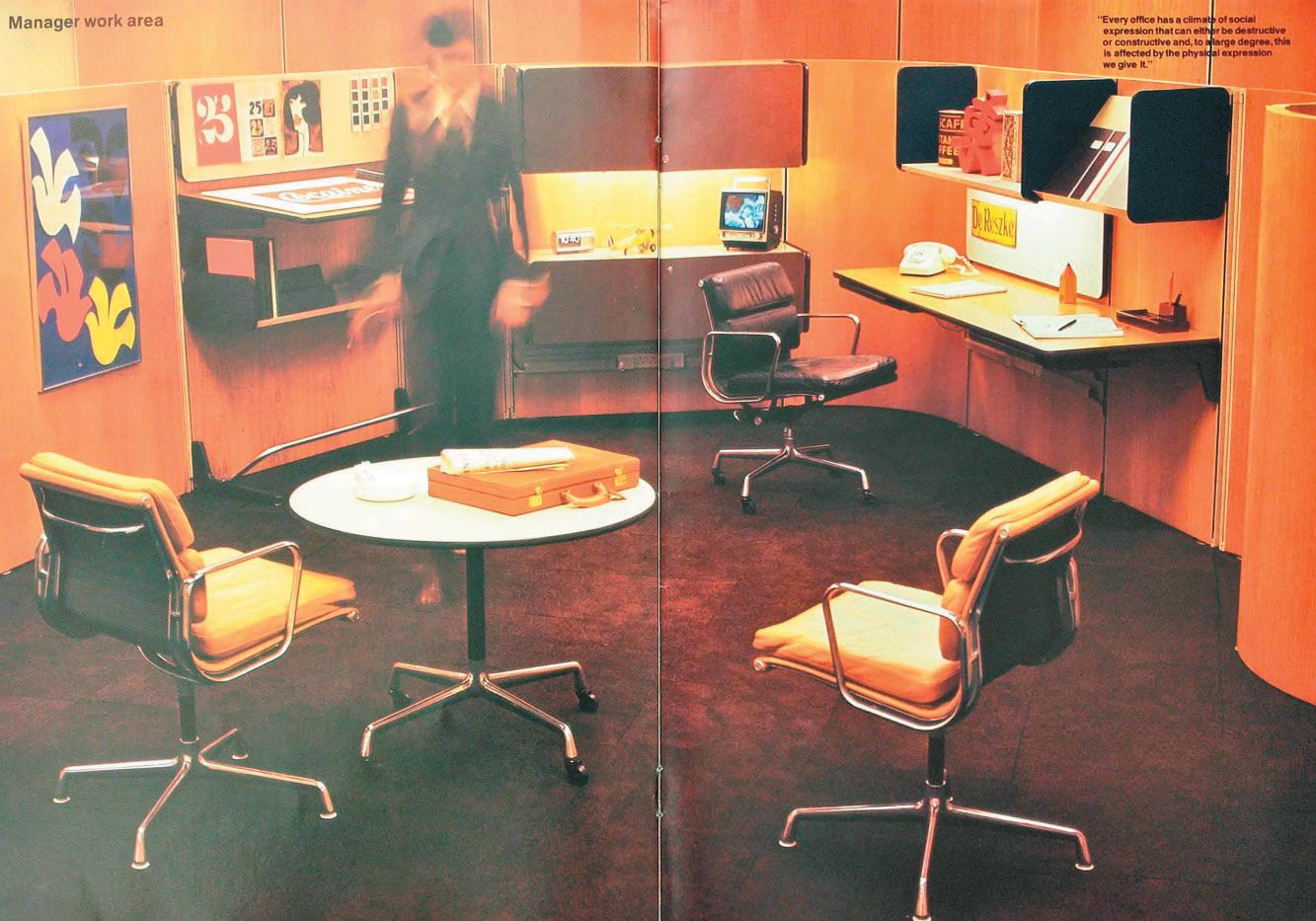
Omar Abolnaga is an Egyptian scholar currently conducting his PhD research in History and Theory of Architecture at The Bartlett School of Architecture, UCL. Omar holds BSc and MSc degrees in Architecture from the Department of Architectural Engineering at Cairo University. Since 2017, he has worked as an educator and researcher in architecture at Cairo University and the American University in Cairo. Omar’s previous research project at Cairo University investigated the influence of European post-Renaissance ideology on shaping Cairo’s post-traditional architecture, taking Cairene Islamic religious buildings as a case study.
Daniyal Farhani is currently a PhD candidate at The Bartlett School of Architecture, UCL, and the Founding Director at CRAD studio. His research interests stem from investigating incremental architectural and urban strategies, including how forces outside the conscious design process shape alternative spaces and vivid atmospheres. He believes that these spaces and strategies, as opposed to traditional design and masterplanning practices, can be used within a world of increasing uncertainty to initiate engagements of individuals and communities. Daniyal currently lives in London and Lisbon. He aims to integrate his research findings and interests into his work in practice.
Christiane Felber ’s grounding is in architectural practice. She has been working as an architect in London since graduating from the Swiss Federal Institute of Technology in 2003. Her more recent work on larger housing developments includes council projects in London. Researching historic precedents, she was struck by the contemporary poor regard of historic London council housing. This led her to an interest in related issues, past and present, and their intellectual context, including cultural, political, social and economic factors. Fundamentally, she is looking for ways to improve housing for all.
Tumpa Husna Yasmin Fellows is an architect, academic and design tutor. She lectures parttime at Central St Martins and the London School of Architecture. Her teaching is informed by design research for the studio she cofounded, Our Building Design, and the charity Mannan Foundation Trust. Tumpa’s research focuses on design practice as an active agent of sociospatial decolonisation for environmental, climate and spatial justice. Tumpa is a Design Review Panellist for Southwark Council’s Planning Department. She is a RIBA BAME Award winner, having received the RIBA-J Rising Star Award (2017) and a Commendation in the RIBA Research Awards (2019).
Natalie Garland is a PhD Candidate at the UCL Institute for Global Prosperity. In 2016, she received a MSc in Social Anthropology from UCL, where she conducted immersive ethnographic fieldwork on Palestinian feminism under the occupation. Natalie’s doctoral project is inspired by her grassroot work in Lebanon with a community-based charitable organisation. Through cofounding an income-generating artisans’ collective, which continues to sustain the livelihoods of fifty refugee women, Natalie developed a passion for innovative models of dignified humanitarian aid. Her work is rooted in nurturing spaces of refugee joy, leveraging craft as a tool for supporting self-reliance and community.
Nikoletta Karastathi is an architect, PhD candidate and Lecturer at The Bartlett School of Architecture, UCL. Her diverse background includes her work in the industry as a practising architect and in academia as a design tutor at the Universities of Bristol, Cardiff, Newcastle and Edinburgh. Her work has been exhibited at the London Design Festival, Dutch Design Week, Lakeside Arts Gallery and the Baltic Centre of Contemporary Arts. Her primary areas of interest include architecture, textiles, computation and material programmability.
Said Mahathir is an architect and urban planner whose practice is based in Indonesia. He holds a BSc in Architecture from Universitas Islam Indonesia and a MSc in Urban Planning from National Cheng Kung University Taiwan, ROC. Currently, he is a PhD candidate at The Bartlett Development Planning Unit, UCL. His research focuses on understanding the interconnections between the production of religious ‘lived space’ and ‘religious ecology’, and how these interconnections turn into a platform providing for and reproducing religious life in the city in the context of London. His research is sponsored by The Ministry of Religious Affairs of Indonesia.
Ana Mayoral Moratilla is a Spanish architect and researcher. She has been a PhD candidate at The Bartlett School of Architecture, UCL, since 2019. Ana teaches History and Theory of Architecture at the Academy of Arts University (California) and at the Greenwich School of Design (London). Ana studied architecture at the University of Seville, Spain (2014), and graduated from the Harvard Graduate School of Design in 2017. She worked at the Andalusian Institute for Historic Heritage from 2018 to 2019. In 2019, she coauthored the book Aljarafe, Más Que Un Colegio: La Arquitectura Pedagógica de Fernando Higueras y Antonio Miró (Aljarafe, More than a School: The Pedagogical Architecture of Fernando Higueras and Antonio Miró).
Catalina Pollak Williamson (DipArch, MA, MArch) is a doctoral candidate at The Bartlett Development Planning Unit, UCL. Her research concerns participatory methodologies based on ‘play’ and the potential they hold for radical politics. In particular, her work explores the relation between ‘play’ and ‘critique’ through performative and tactical participatory interventions seeking to drive urban and social change. She currently teaches at the School of Architecture, University of East London.
Petra Seitz is a PhD candidate at The Bartlett School of Architecture, UCL. Her doctoral work explores the history and evolution of commercial office interiors as they relate to the way we work within capitalism. Petra is a Principal Investigator in the Chandigarh Chairs project, exploring the modernist furniture of Chandigarh, India, and a Lecturer in Architectural History at the University of Greenwich. She holds a MA in History of Design from the Victoria and Albert Museum/ Royal College of Art and a BA in Politics from Oberlin College.
MPhil/PhD supervisors:
Dr Allen Abramson (UCL Anthropology), Professor Robert Biel (Bartlett), Professor Peter Bishop (Bartlett), Professor Iain Borden (Bartlett), Roberto Bottazzi (Bartlett), Jos Boys (Bartlett), Dr Eva Branscome (Bartlett), Professor Victor Buchli (UCL Anthropology), Professor Ben Campkin (Bartlett), Professor Mario Carpo (Bartlett), Professor Nat Chard (Bartlett), Professor Marjan Colletti (Bartlett), Professor Marc-Olivier Coppens (UCL Chemical Engineering), Professor Marcos Cruz (Bartlett), Professor Edward Denison (Bartlett), Dr Simon Donger (Royal Central School of Speech and Drama), Professor Murray Fraser (Bartlett), Professor Stephen Gage (Bartlett), Dr Stylianos Giamarelos (Bartlett), Dr Jane Gilbert (UCL School of European Languages, Culture and Society), Dr Ruairi Glynn (Bartlett), Dr Liza Griffin (Bartlett), Dr Sam Griffiths (Bartlett), Dr Kostas Grigoriadis (Bartlett), Peter Guillery (Bartlett), Professor Sean Hanna (Bartlett), Professor Penelope Haralambidou (Bartlett), Professor Neil Heyde (Royal Academy of Music), Professor Jonathan Hill (Bartlett), Dr Rebecca Jennings (UCL History), Dr Jan Kattein (Bartlett), Professor Susanne Kuechler (UCL Anthropology), Dr Guan Lee (Bartlett), Dr Chris Leung (Bartlett), Dr Jerome Lewis (UCL Anthropology), Professor CJ Lim (Bartlett), Professor Christoph Lindner (Bartlett), Dr Barbara Lipietz (Bartlett), Professor
Yeoryia Manolopoulou (Bartlett), Dr Clare Melhuish (UCL Urban Lab), Professor Mark Miodownik (UCL Mechanical Engineering), Professor Sharon Morris (Slade), Dr Michal
Murawski (School of Slavonic and East European Studies), Dr Shaun Murray (Bartlett), Dr Brenda Parker (UCL Biochemical Engineering), Professor Alan Penn (Bartlett), Professor Barbara Penner (Bartlett), Professor Ioannis Papakonstantinou (UCL Electronic and Electrical Engineering),
Professor Sophia Psarra (Bartlett), Dr Caroline Rabourdin (University of Greenwich), Professor Peg Rawes (Bartlett), Professor Jane Rendell (Bartlett), Harriet Richardson (Bartlett), Professor Kerstin Sailer (Bartlett), Professor Lara Schrijver (University of Antwerp), Dr Tania Sengupta (Bartlett), Professor Bob Sheil (Bartlett), Professor Mark Smout (Bartlett), Colin Thom (Bartlett), Dr Nina Vollenbröker (Bartlett), Professor Tim Waterman (Bartlett), Dr Robin Wilson (Bartlett), Professor Oliver Wilton (Bartlett), Dr Fiona Zisch (Bartlett).
Abdullah Al-Dabbous, Ava Aghakouchak, Lena Asai, Richard Beckett, Olivier Bellflamme, Jhono Bennett, William Victor Camilleri, Niccolo Casas, Jingwen Chen, Yichuan Chen, Ting Ding, Killian Doherty, Daniyal Farhani, Fernando P. Ferreira, Naomi Gibson, Felix Graf, Danielle Hewitt, Zhenhang Hu, Jesicca In, Nikoletta Karastathi, Paul King, Dionysia Kypraiou, Alexandra Lăcătușu, Rebecca Loewen, Elin Eyborg Lund, Mengdi Mao, Emma Kate Matthews, Hamish Muir, Giles Nartey, Phuong-Trâm Nguyen, Aisling O’Carroll, Daniel Ovalle Costal, Annarita Papeschi, Thomas Parker, Arthur Prior, Zoë Quick, Ramandeep Shergill, Alexandru Senciuc, Wiltrud Simbuerger, Elin Soderberg, Sayan Skandarajah, Sam van Strien, Jonathan Tyrrell, Anna Wild, Henrietta Williams, Eric Wong, Sandra Youkhana, Nona Zakoyan.
Omar Abolnaga, Yahia Abulfadl, Alena
Agafonova, Atheer Al Mulla, Vasileios Aronidis, Sebastian Buser, Thomas Callan-Rilley, Paola Camasso, Chin-Wei Chang, Mollie Claypool, Kerri Culhane, Sally Cummings, Isabel Donetch, Olivia Duncan, Kirti Durelle, Tom Dyckhoff,
Pol Esteve, Christiane Felber, Stephannie Fell, Harry Foley, Clemency Gibbs, Ryan Kearney, Thomas Keeley, Xiuzheng Li, Yiming Liu, Te-Chen Lu, Duy Mac, Kieran Mahon, Guy Mannes-Abbott, Ana Mayoral Moratilla, Michail Papavarnavas, Feysa Amalia Poetry, Matthew Poulter, Anthony Presland, Patricia Rodrigues Ferreira da Silva, Diana Paola Salazar Morales, Petra Seitz, Lina Sun, Alessandro Toti, Claire Tunnacliffe, Maria Venegas Raba, Azadeh Zaferani, Katerina Zacharopoulou.
Submitted and/or completed doctorates
2022-23
Paul Bavister, Ruth Bernatek, Matthew Butcher, Miranda Critchley, Judit Ferencz, Nina Jotanovic, Ifigeneia Liangi, Shneel Malik, Carlo Menon, Chi Nguyen, Thomas Pearce, Soledad Perez Martinez, Sarah Riviere, Saptarshi Sanyal, Adam Walls, Seda Zirek.
This catalogue has been produced to accompany PhD Research Projects 2023, the seventeenth annual conference devoted to doctoral research at The Bartlett School of Architecture, UCL, 21 February 2023.
Edited by Stylianos Giamarelos and Katerina Zacharopoulou. Designed by Avni Patel | www.avnipatel.com
Copyright © 2023 The Bartlett School of Architecture, UCL.
All rights reserved. No part of this publication may be reproduced or transmitted in any form or by any means, electronic or mechanic, including photocopy, recording, or any information storage and retrieval system without permission in writing from the publisher. www.bartlett.ucl.ac.uk
PhD Research Projects 2023 is supported by The Bartlett Faculty of the Built Environment, UCL.


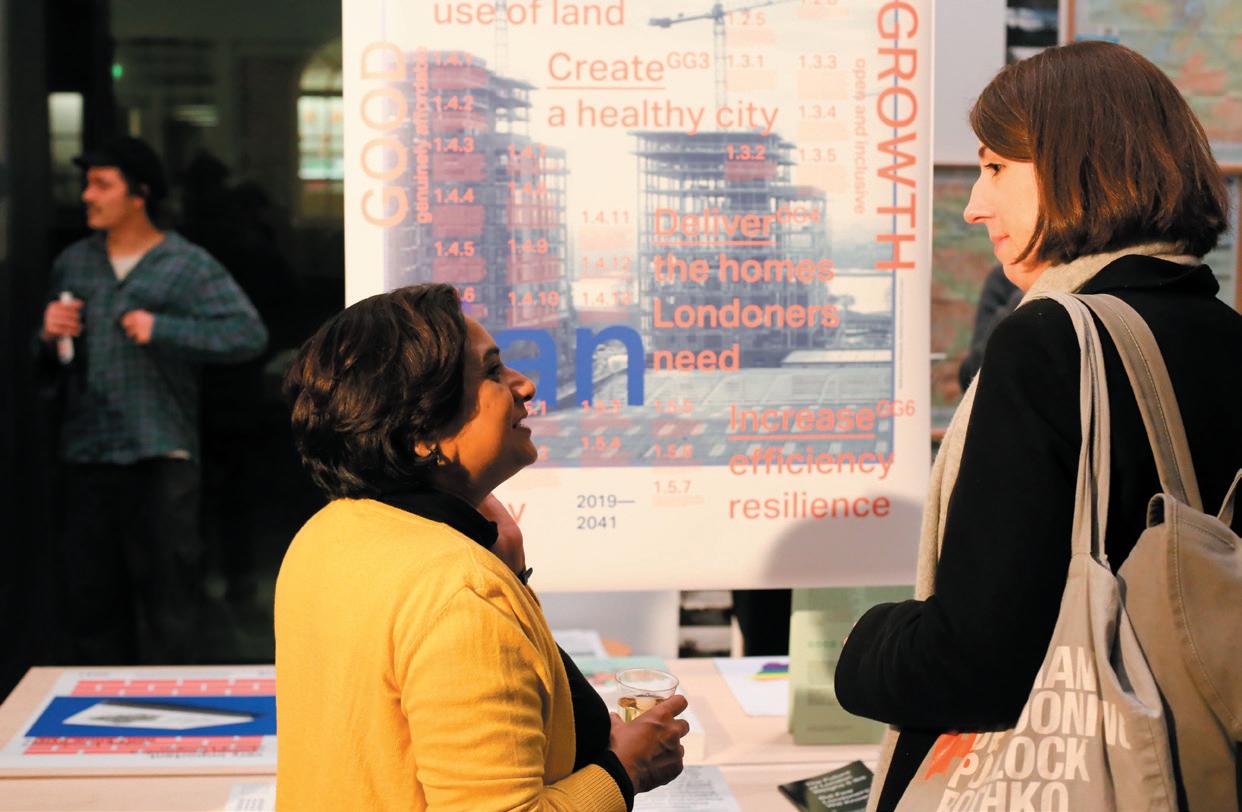

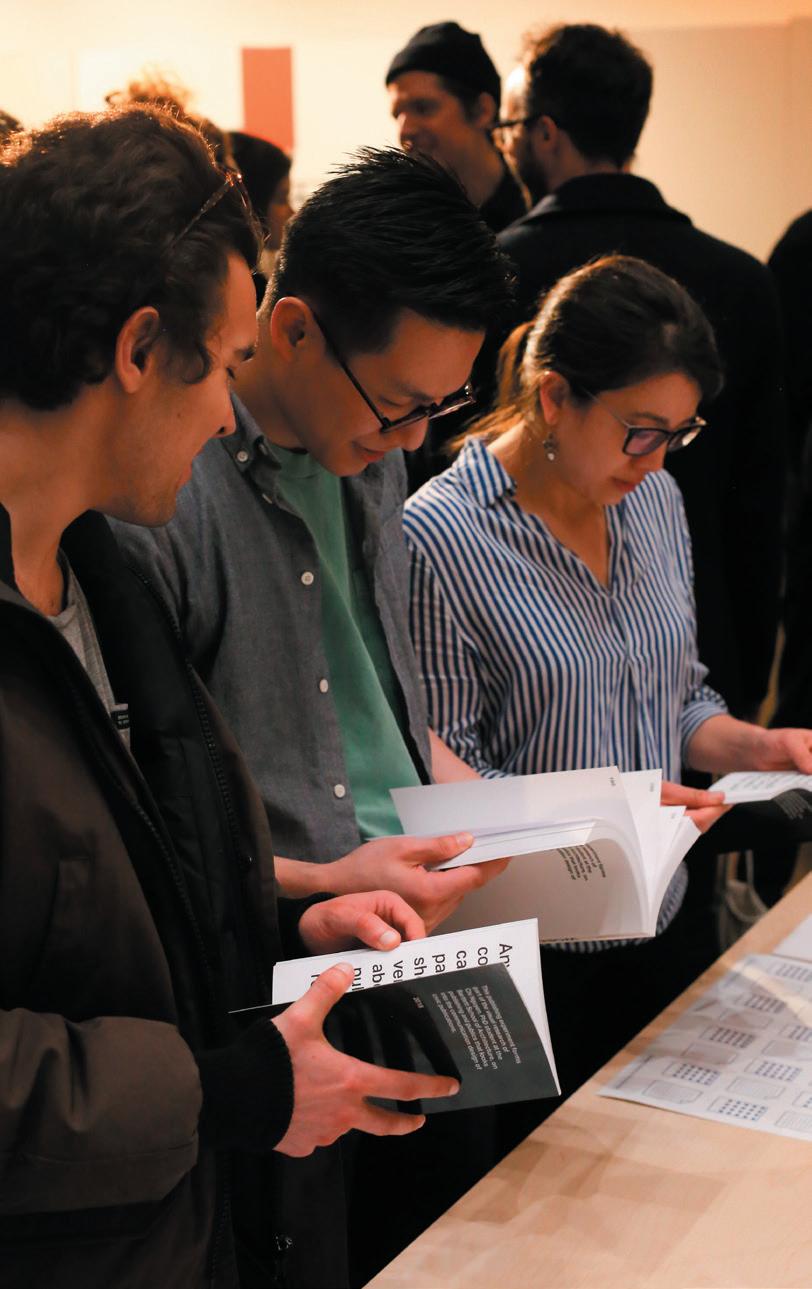



OMAR ABOLNAGA
DANIYAL FARHANI
CHRISTIANE FELBER
TUMPA HUSNA YASMIN FELLOWS
NATALIE GARLAND
NIKOLETTA KARASTATHI
SAID MAHATHIR
ANA MAYORAL MORATILLA
CATALINA POLLAK WILLIAMSON
PETRA SEITZ
Sanyanli Urban Village, Guangzhou (Photograph: Daniyal Farhani, 2020)